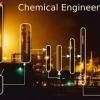Hi everyone,
I am developing an Excel file for relief valve sizing, and I am stuck on the fire case.
I have set up the calculation such that the fire heat absorption, Q, and latent heat of vaporization at STP, Hvap, are used to calculate relief load, W = Q/Hvap. Unfortunately, I think it is far more complicated than that.
My next thought is to find the boiling point of a given liquid at the system conditions (pressure) and use specific heat to find heat input, H, required to get to the boiling point. The relief load would then be W = Q/(H+Hvap).
IF that is the correct method to determine relief load, I have several issues remaining. Our systems are fairly high pressure (~1350psig) and I understand that boiling point, specific heat, and latent heat of vaporization are all dependent on pressure; however, I cannot for the life of me find data for those variables vs. pressure or equations to describe their relationships. The liquids in question would be mainly water, MDEA, and glycol.
I know of the Clapeyron equation; however, it appears to assume Hvap is a constant value.
Am I overthinking this? Or is there data available that I am overlooking?
Thanks in advance!
Melissa

 FB
FB















